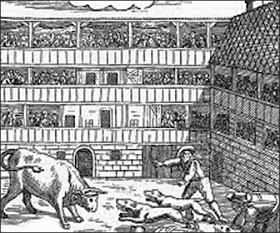This morning dawned grey and dull – not great weather for
Pinner Fair which takes place today. Traditionally held on the Wednesday after the Spring Bank Holiday,
Pinner Fair dates back to 1336 and the reign of King Edward III. I remember it
well as a child (in the 1970's, I hasten to add, not the 1300's.) This charter
allowed the Mayor of Harrow to hold a weekly market and a larger fair up to
five times a year. This has survived down the centuries as the annual fair in
May.
As a child growing up near Pinner, I used to walk into the
village with my father to watch the rides being set up. The walk still is very
pleasant, especially at this time of year with the trees in blossom, but it is
essentially a stroll through suburbia, albeit with neat front gardens and
well-to-do houses. Quite different from what met the visitor in the 1830's.
'We used to go across
the fields about four miles to Pinner.'
Revd. Henry Torre
My father and I would walk along Bridge Street and the High
Street to watch the lorries being unloaded and the bustle of rides being set
up. In previous decades this was regimented by the police and a sergeant would
blow his whistle at 6pm, to signal the start of the 'rush-in' to claim the best
pitches. The fair people, who were waiting in side streets, would rush to their
favourite spot and lay claim to it by sticking a pole in the gutter.
As a child I had two favourite rides; the ponies that ambled
up and down the lane outside the Police Station, and the traditional carousel
roundabout at the top of the hill beside the parish church. The last time I
visited the fair was with my own children, several years ago and although the
carousel roundabout survives, the ponies giving rides are no more. Although the
relatively innocent stalls of hooking a duck on a stick still exist today, more
and more of the rides as noisy mechanical rides designed to thrill and frighten.
A lot has changed since those earlier fairs.
'The chief attractions
were roundabouts, swinging-boats, single-stick and boxing matches; among the
labourers, jumping in sacks, climbing a greased pole for a leg of mutton or a
hat on the top, and last but not least in importance a dance at a public
house.'
Revd. Henry Torre.
Recollections of School Days at Harrow (1890)
Some of the public houses in Pinner, such as the Queen's
Head, and The Victory, date back centuries. Nowadays the publicans are
content to make money from visitors to the fair popping in for refreshments,
but in past centuries they were more enterprising. Dancing booths were popular and the local
publicans often took advantage of the crowds to organize a dance in a side
room.
'The dancing was in a
small room, and the atmosphere, impregnated with the smell of beer and tobacco,
and the noise of dancing in chaw-boots, to a merry fiddle were something
indescribable. Dancing continued till about midnight, when we walked back to
Harrow.'
Nowadays, there is no dancing, but plenty of eating and
drinking. For the one day of the fair the main roads of the High Street and
Bridge Street are closed to traffic to make way for the attractions. It must be
a sign of my age but the fair lacks the magic it held for me as a child. It
just seems noisy, dirty and expensive. So what about you? Do you like fairs?



























